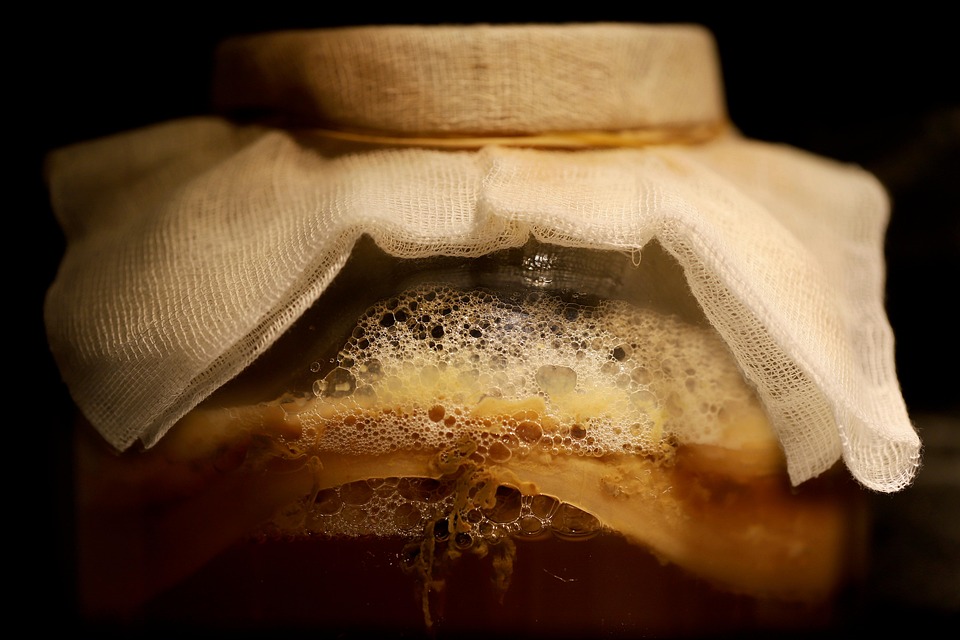Food
Understanding Fermentation: A Key to Food Preservation

Have you ever cracked open a jar of pickles and thought, “Wow, this tastes amazing!” or savored a scoop of tangy yogurt? If so, you’ve experienced the magic of fermentation! This ancient process not only enhances flavor but also acts as a natural method for preserving food. So, let’s dive into the fascinating world of fermentation and uncover why it’s such a crucial aspect of food preservation.
What is Fermentation?
At its core, fermentation is a metabolic process where microorganisms like bacteria, yeast, and molds convert sugars into acids, gases, or alcohol. It’s nature’s way of helping food survive longer while developing complex flavors and textures we all love!
It’s a bit like a dance party where these little organisms boogie with the sugars in your food, producing lactic acid for yogurt or alcohol for your favorite beverage. How cool is that?
The Science Behind It
Understanding the science might sound daunting, but fear not—it’s pretty straightforward. When conditions are right, and the microorganisms are given a cozy environment (think warmth and nutrients), they set to work.
Here’s a breakdown of the core players in the fermentation game:
- Bacteria: Responsible for turning milk into yogurt or cream into sour cream.
- Yeasts: These guys turn sugar into alcohol and carbon dioxide, making bread rise or producing delightful wines.
- Molds: Not all molds are bad! Some are used to produce cheeses like blue cheese.
The end result? Preserved food that can last much longer than its unfermented counterpart, plus enhanced flavors and nutritional benefits.
Benefits of Fermentation
Let’s talk about why fermentation isn’t just a trend; it’s a time-tested technique that brings multiple benefits to the table (pun totally intended!).
-
Extended Shelf Life: Fermentation naturally preserves food by creating an acidic environment that inhibits spoilage-causing bacteria.
-
Nutritional Boost: This process can enhance the bioavailability of nutrients. For example, fermented vegetables contain probiotics that are great for gut health.
-
Enhanced Flavor: There’s no denying that fermentation adds depth and complexity to food. Think of the captivating tanginess of kimchi or the robust flavor of sourdough bread!
-
Eco-Friendly: Fermentation can help reduce food waste by allowing you to transform overripe fruits or vegetables into delicious probiotic-rich foods.
Isn’t it incredible how such a simple process can pack such a punch?
Common Fermented Foods
You may not have realized it, but fermented foods are all around us! Here are some popular ones you might enjoy:
- Yogurt: This creamy treat is packed with probiotics and enzymes.
- Kefir: A tangy, drinkable yogurt that comes from kefir grains.
- Sauerkraut: Fermented cabbage with a crunchy texture and zesty flavor.
- Kimchi: A spicy Korean dish made from fermented vegetables, typically cabbage and radishes.
- Kombucha: A fizzy drink made from sweetened tea fermented with a symbiotic culture of bacteria and yeast.
Each of these delightfully fermented foods has its own unique flavor profile and health benefits.
How Does Fermentation Preserve Food?
So, how exactly does this process help keep our food fresh? Let’s break it down a bit.
Lowering pH Levels
As bacteria ferment sugars, they produce lactic acid, which lowers the pH of the food. This acidic environment creates a hostile atmosphere for spoilage organisms, helping to prevent them from multiplying.
Competition
Fermentation adds beneficial bacteria that outcompete harmful bacteria for resources. It’s like having bouncers at a club—only the cool crowd gets in!
Flavor Development
The byproducts created during fermentation (like carbon dioxide and alcohol) not only add unique flavors but also contribute to the preservation process.
Fermentation isn’t just a simple method of preservation; it’s an intricate balancing act of organisms working together.
Getting Started with Fermentation at Home
Now that you’re all fired up about fermentation, why not try it yourself? Here’s a simple guide to getting started with homemade fermented foods.
Easy Fermentation Recipes
-
Simple Sauerkraut:
- Ingredients: 1 medium head of cabbage, 1 tablespoon salt.
- Instructions: Chop the cabbage, toss it with salt, and massage it until it releases liquid. Pack it tightly in a clean jar and let it ferment at room temperature for about a week. Taste it along the way; once it reaches your desired tanginess, store it in the fridge!
-
Basic Yogurt:
- Ingredients: 1 quart of milk, 2 tablespoons of plain yogurt (with live cultures).
- Instructions: Heat milk to just below boiling, then let it cool. Stir in yogurt and keep it warm (like in an oven with the light on) for 6-12 hours. The longer it ferments, the tangier it gets!
Tips for Success
- Always use clean utensils and containers.
- Keep your fermenting foods in a cool, dark place.
- Experiment with flavors—try adding spices or veggies to your sauerkraut for a twist!
Fermentation in Different Cultures
It’s fascinating to see how cultures around the world embrace fermentation uniquely. Here are a few examples to tickle your taste buds:
- Greece: They are famous for their yogurt and various cheeses.
- China: Fermented soybean products like soy sauce and tofu are staples.
- Mexico: Traditional drinks like Tepache are made from fermented pineapple.
Each culture’s take on fermentation tells a story of tradition and innovation!
For more information on the fascinating processes involved in fermentation, check out this article from the BBC on how fermentation works.
Fermentation isn’t just a preservation technique; it’s a celebration of flavors, cultures, and the chemistry of food. Whether you’re a seasoned fermenter or a curious novice, there’s always something new to explore in this delicious realm!
